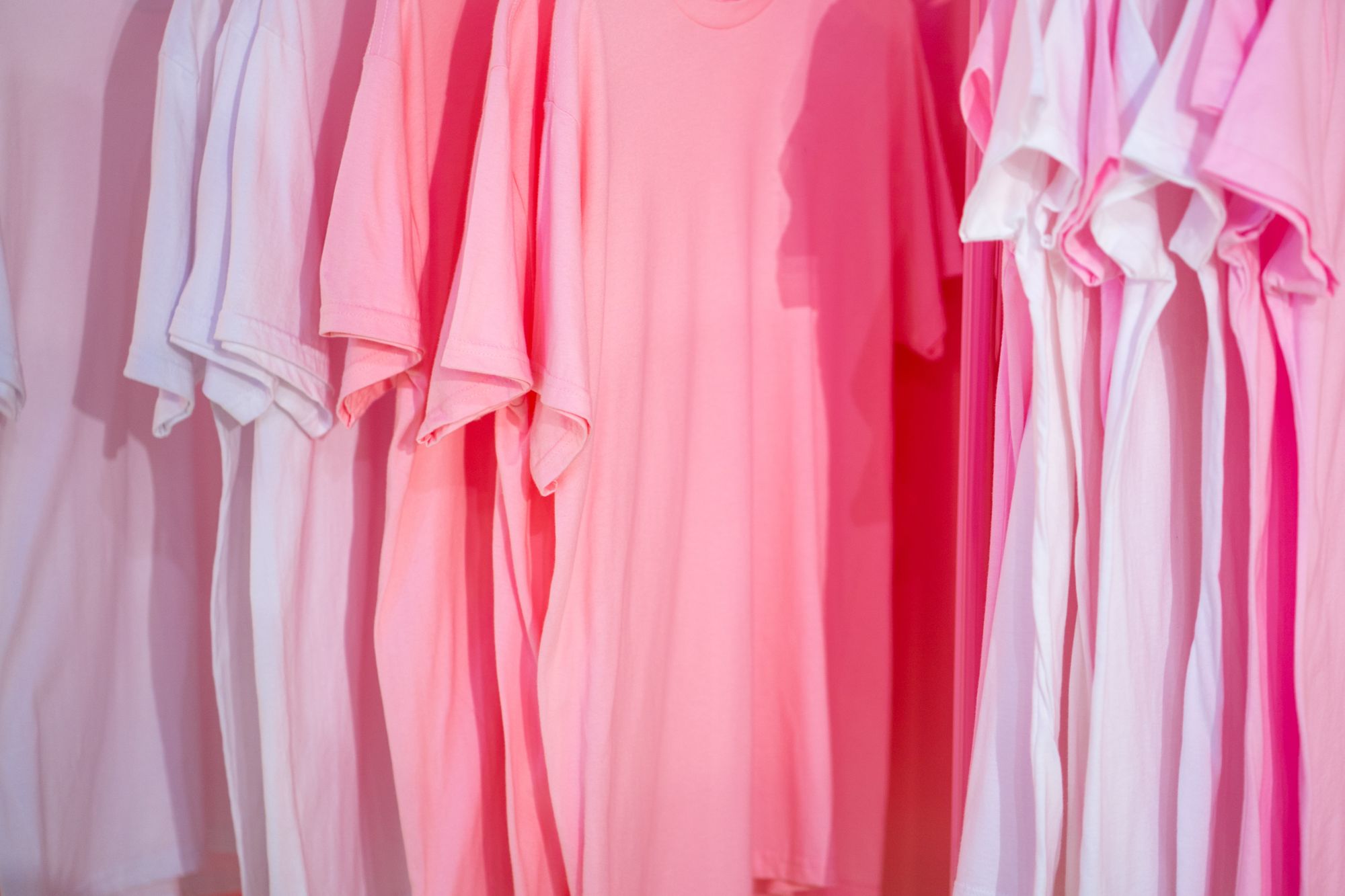Fashion is quickly killing our planet, with stats revealing that the fashion industry causes 10% of all greenhouse gas emissions each year. Not just that, but it consumes more energy than the shipping industry and the airline industry combined.
It’s scary (and in some ways, surprising) stuff!
But whilst fashion is cool, you know what’s even cooler? Knowledge.
In this article, we want to take a look at the main offenders when it comes to the fabrics that our clothes are made of. And so that we end on a cheerier note, we also want to take a look at sustainable fabrics (heroes) of the future.
Gonna join us? Grab a latte and let’s take a look.
👕 Cotton
Cotton is a real old-timer in the fashion industry, and the good news is that it’s totally natural.
The downside is that producing it is very taxing on our environment.
Producing enough cotton just to make a pair of jeans requires at least 10,000 gallons of water, whilst modern-day cotton farming uses lots of toxic chemicals and pesticides that are damaging our earth.
In short, it’s become known as a notorious bad boy of the fashion industry.
➡️ Alternatives to cotton?
According to the Cotton Up Guide, sustainable cotton is “grown in a way that can maintain levels of production with minimal environmental impact.” It can “support viable producer livelihoods and communities, and can do so in the face of long-term ecological constraints and socioeconomic pressures.”
Sustainable cotton is growing in popularity, and it now accounts for 12% of the world’s cotton. And the great news is that, back in 2017, 36 major brands pledged to achieve sustainable cotton by 2025. Brands included Levi’s, Burberry, and House of Fraser.
👗 Synthetics
Synthetics, such as acrylic, nylon, and polyester, make up more than half of the material input required for our clothes. Polyester is the most common synthetic, and while none of these materials require only a minimal amount of water, they still impact our environment in other ways.
For example, none of them are biodegradable. They also require petrochemical industries during the production process, which is the same as saying they need fossil fuel extraction. This, of course, raises the possibility of synthetics being inextricably linked with biodiversity loss, wildlife disruption, methane emissions, and so on.
➡️ Alternatives to synthetics?
Hemp has emerged as a leading sustainable alternative to synthetics. And if you’re surprised that hemp can be used to make clothes? Yep, it’s true — hemp can be used to make clothes! Clothing brands can use hemp to make all kinds of outfits and accessories, from bags and hates, to skirts, dresses, shirts — and even jeans.
Hemp is completely eco-friendly. It isn’t bad for soil nutrients, and the hemp plant barely requires any care as it grows. Moreover, the hemp fabric is UV resistant, breathable, and warm.
🧤 Leather + Wool + Fur
Who didn’t want a leather jacket when they were younger? Leather jackets were cool, while fur coats were… well, we’ve always known fur coats were a bit wrong.
But whilst there are obvious ethical issues surrounding the manufacturing and wearing of fur coats, leather, wool, and fur (all animal-derived clothing materials) can actually be biodegraded safely if no harmful substances are used in their production. Moreover, they’re not nearly as popular as cotton.
On the flip side, fur is ethically a big no-no. Whilst a fur coat certainly keeps you warm in the winter, animals are inevitably caught up in the crossfire. Minks, foxes, and even cats and dogs are used in the manufacturing of fur coats, and the whole process is just cruel.
Leather, meanwhile, emits huge amounts of methane, whilst the process of converting animal skin into leather requires a dangerous amount of energy, as well as toxic chemicals like coal-tar derivatives and mineral salts.
And here’s a scary fact: around 85% of all leather is chrome-tanned during production via a very dangerous substance called chromium. This substance is so dangerous that it can actually cause cancer to develop among tannery workers.
Where wool is concerned, there are a few more question marks in regards to sustainability. On the one hand, wool is recyclable. The Sustainable Apparel Coalition’s Higg Materials Sustainability Index even ranks its impact on the environment at 82 out of 100 (compare this with 98 out of 100 for cotton).
On the other hand, BooHoo group turned their back on wool for a reason (even if it did backtrack a little later) — the production of this animal-derived material is actually worse for the environment than acrylic and even polyester.
Worse still, the production of wool is, of course, a form of animal agriculture. And all animal agriculture = more greenhouse gases. Sheep are just like cows in that they release huge amounts of methane.
➡️ Alternatives to leather, wool, and fur?
If you need a new coat or a pair of sneakers (or even a new handbag) but want to be sustainable, you’ve got so many options. Indeed, vegan alternatives to leather seem to be growing by the week!
Check out, for example, Nat-2, a German footwear brand that, whilst not completely vegan, has managed to create sneakers made from entirely recycled and sustainable materials. These materials include fungi, mushrooms, stone, glass and — um — coffee.
Speaking of coffee! Did you know that coffee leather is now a thing? Made from recycled coffee beans and coffee plants, this is actually a patented material that’s insanely amazing.
There is also grass leather, coconut leather… and OMG, check out these wine leather bags!
When it comes to coats and trousers, meanwhile, check out coolstone “leather ,” a material made out of sewable slate stone.
Hemp, meanwhile, is a good alternative to both fur and wool. However, you’ll need to be careful if you simply opt for the “faux-fur” option, because environmentalists have raised the question whether faux-fur is truly better than fur or — because they’re made almost exclusively from plastic — whether it’s just as bad (if not worse).
What's next?
Being a conscious consumer who cares about fashion and sustainability requires a lot of due diligence and care on our part.
I hope this article has helped you out somewhat, but it’s really important that you do some more research of your own so that you can continue making decisions that fit your values. Buy clothes that look good on you but that also make you feel good about who you are and how you’re affecting the planet.
Now, excuse me while I go buy some coffee leather…
If you liked this article, make sure to check our guide to quitting fast fashion, guide to thrifting, and an article about how to find out if your clothes are ethical and sustainable.
Join the budding community of conscious consumers right now and help save the planet! Sign up for NatureHub Desktop App here.
Also, it's available for Apple iOS and Android.






